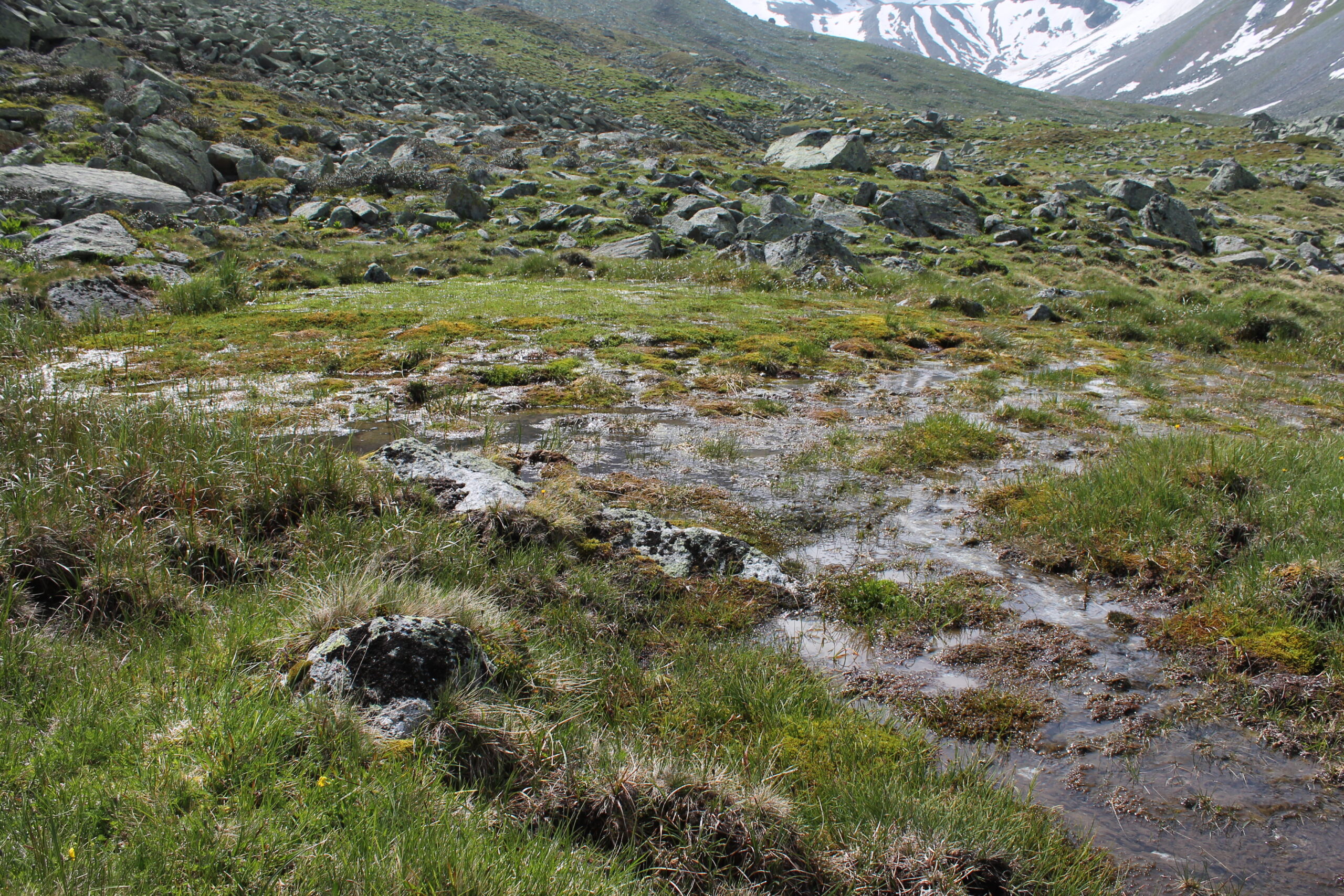Laws
The Tyrolean Environmental Ombudsman represents the interests of nature and the environment as a party to official approval procedures. This mandate is based on the following laws:
Tyrolean Nature Conservation Law 2005
The Tyrolean Environmental Ombudsman can be a party to all nature conservation proceedings with the exception of proceedings in Administrative Penal Law within the terms of Art. 8 of the General Administrative Procedure Act (AVG). In the case of written proceedings, he submits his arguments in writing (possibly after a site inspection) or he exercises his party status in the framework of oral proceedings.
In the case of nature conservation proceedings conducted by a district authority, the Environmental Ombudsman may choose to be represented by a Nature Conservation Officer (Art.
37 TNSchG 2005).
Environmental Impact Assessment Law 2000
Within the terms of Art. 2 para. 4 UVP-G2000, the Office of the Environmental Ombudsman is an agency established by the advocate of the environment in administrative proceedings. Whether an agency fulfils these criteria depends on whether its mandate is primarily to protect the environment or some part of the environment in administrative proceedings, whatever the regulations involved. The Environmental Ombudsman for the Tyrol satisfies these criteria. Pursuant to Art. 19 para. 3 UVP-G2000, he has party status in approval procedures and in proceedings based on Art. 20 (final inspections). Pursuant to Art. 3 para. 6 UVP-G2000, the Environmental Ombudsman is entitled to make application for a project to be vetted for the need for an EIA and to appeal the decision of the original authority involved. He also has party status in EIA proceedings relating to federal highways und high-speed railways pursuant to Art. 23a ff UVP-GG 2000.
Waste Management Law 2002 (AWG 2002)
In the context of proceedings relating to the construction, operation and major modifications of permanent and mobile waste treatment plants, the Tyrolean Environmental Ombudsman has party status to ensure compliance with nature conservation regulations. In the simplified procedure (except for waste deposits) and in proceedings for the approval of mobile treatment plants (“type approval”), his party status also relates to questions of public interest pursuant to Art. 1 para. 3 AWG 2002. In such matters, the Environmental Ombudsman has the right of appeal and the right to lodge a complaint with the Administrative Court. He is also entitled to make application to the appropriate authority (Governor the Tyrol) for a project to be vetted for the need for an EIA in matters covered by Art. 6 para. 6 AWG.
Agricultural Amendment Act 2004
Authority for basic legislation in matters of land reform is vested in the federal government, while the regional governments are responsible for the implementation legislation and enforcement. The relevant implementation laws now include provisions for the Environmental Impact Assessment (EIA). Under these provisions, the agricultural authority must conduct an EIA with public participation to assess the effects of such projects on the environment and must take account of the results of the EIA in its written rulings in all cases where certain threshold values are exceeded or certain criteria are met. The Tyrolean Environmental Ombudsman is entitled to have projects vetted to ascertain whether these conditions are met and an EIA is therefore mandatory. In addition, he has a subjective right to ensure compliance with legal norms that serve to protect the environment or the public interest he is mandated to represent, to appeal the initial ruling and to lodge a complaint with the Administrative and Constitutional Courts.
Environmental Management Law (UMG)
Proceedings based on this law relate primarily to quality assurance and controls for companies. In the corporate world, it can be said that environmental protection is now a standard feature of the companies’ activities. Where the tools of environmental management have been developed and deployed, including the corporate eco-balance, environmental controlling, eco-design and environment-oriented marketing, environmental protection is no longer a luxury or marginal frill. This is reflected in the growing interest shown in the services sector in environmental certification in the framework of the EC Eco-audit and ISO.
The Alpine Convention (and its protocols)
In Austria, the protocols of the Alpine Convention, a multilateral treaty in international law, came into effect on 18 December 2002 (BGBl 477/1995; BGBl III No. 230 – 238/2002). The Alpine Convention is the only international treaty regime with a permanent secretariat in the Tyrol. (www.alpenkonv.org).
The Alpine Convention affects some 65 percent of the area of Austria and a total of 1,135 municipalities. The provisions of the convention are to be directly applied by the legislative and the authorities in accordance with Austrian law insofar as they are self-executing. The first official notices have already been issued of rulings taken on the basis of the Alpine Convention.
The protocols are also being implemented in exemplary manner at the level of the local authorities, especially in the framework of the Alliance in the Alps network of municipalities (http://www.alpenallianz.org/), the Alpine Network of Protected Areas (http://www.alparc.org/), and the international Alpina long-distance path (http://www.via-alpina.com/), which also passes through the Tyrolwelches auch durch Tirol führt, werden die Protokolle auf kommunaler Ebene beispielhaft umgesetzt.
Federal Environmental Liability Law (B-UHG)
The subject of this law is liability for injury or the risk of injury to life and limb, and damage to water and the soil deriving from certain commercial activities (see Annex 1 of the law), e.g. operation of plants pursuant to Art.77a in conjunction with Annex 3 GewO 1994, Art. 37 para. 1 in conjunction with Annex 5 AWG 2002, Art. 121 MinroG, waste collection and management, all discharges in waterways pursuant to WRG 1959, the production, use, storage and release of pesticides within the terms of Art. 2 para. 1 of the 1997 Pesticides Act, biocide products, etc). Where an environmental hazard exists or environmental damage has already occurred, the authorities must take avoidance or rehabilitation measures without delay. Natural and legal persons and the Environmental Ombudsman pursuant to Art. 11 B-UHG and recognised environmental organisations pursuant to Art.19 para. 7 UVP-G have the right to lodge a written environmental complaint with the relevant District Commission and request that avoidance and/or rehabilitation measures be taken. In proceedings conducted on the basis of Art. 6 and 7 B-UHG, persons who are entitled to lodge a complaint also have party status in accordance with Art., Biozid Produkten u.a.). Besteht die Gefahr eines Umweltschadens oder ist ein Umweltschaden eingetreten, so haben die Behörden unverzüglich Maßnahmen zur Vermeidung oder Sanierungsmaßnahmen einzuleiten. Gemäß § 11 B-UHG haben natürliche und juristische Personen sowie der Umweltanwalt und nach §19 Abs. 7 UVP-G anerkannte Umweltorganisationen das Recht auf eine schriftlich bei der örtlichen Bezirkshauptmannschaft einzubringende Umweltbeschwerde mit der Aufforderung an diese, zwecks Vermeidung und/oder Sanierung eines Umweltschadens tätig zu werden. In den nach § 6 und 7 B-UHG durchzuführenden Verfahren haben die zur Beschwerde Berechtigten Parteistellung gem. § 12 B-UHG.
Additional responsibilities pursuant to (EU) legal provisions:
Aarhus Convention (especially on the basis of EC directives)
SEA Directive, implemented in the Tyrol in the form of the Tyrolean Environmental Assessment Law, LGBl no.34/2005 (TUP)
WF Directive (implemented at the federal level in the form of the Water Law Act as amended in BGBl. I no. 82/2003 and directly applicable in the framework of TNSchG 2005)
IPPC Directive, which concerns such matters as the Trade Regulations Act (GewO), the Mineral Resources Act (MinroG), the Boiler Facilities Clean Air Act (LRG-K) and the Air Pollution Control Act (IG-L).




